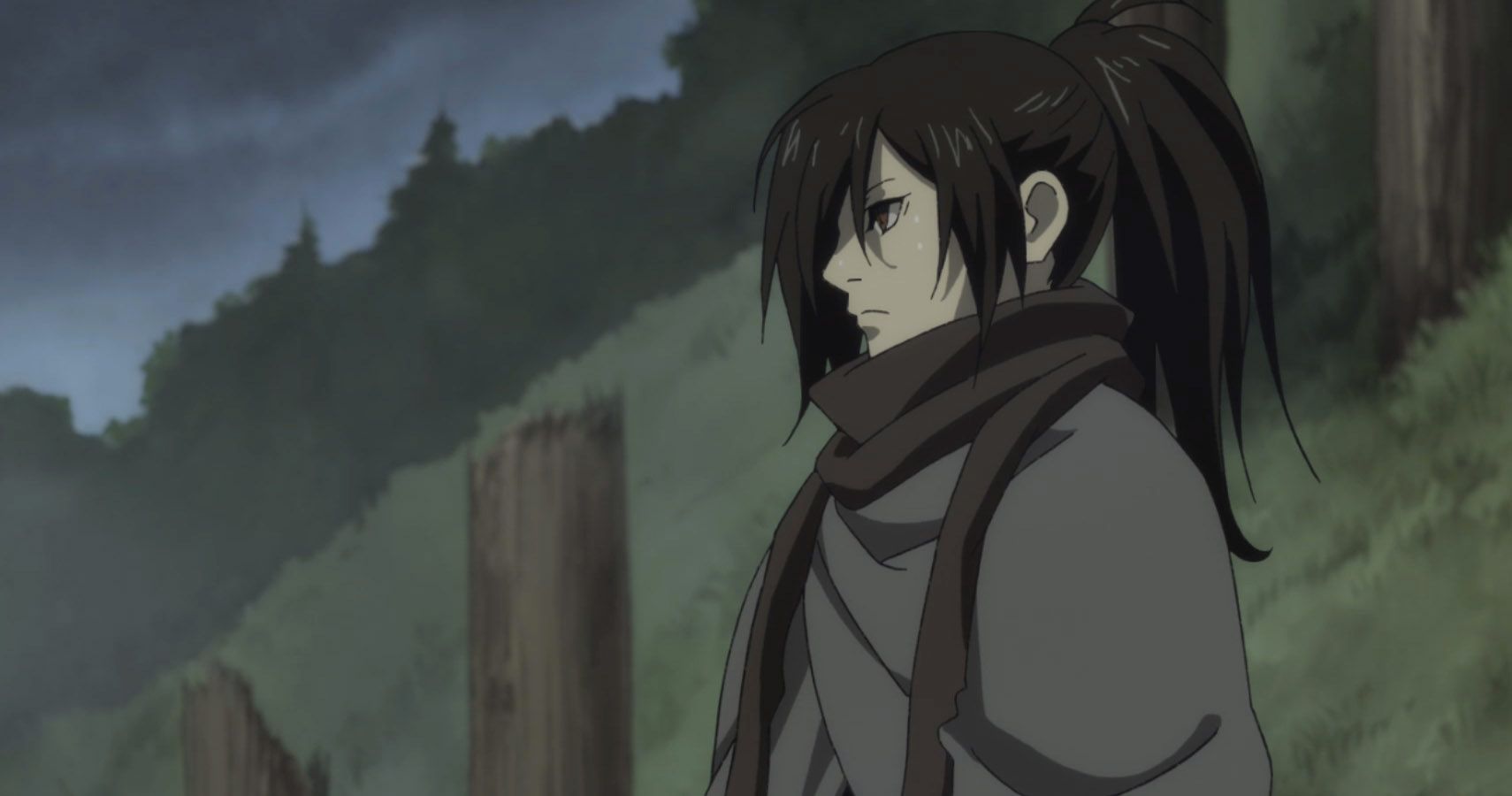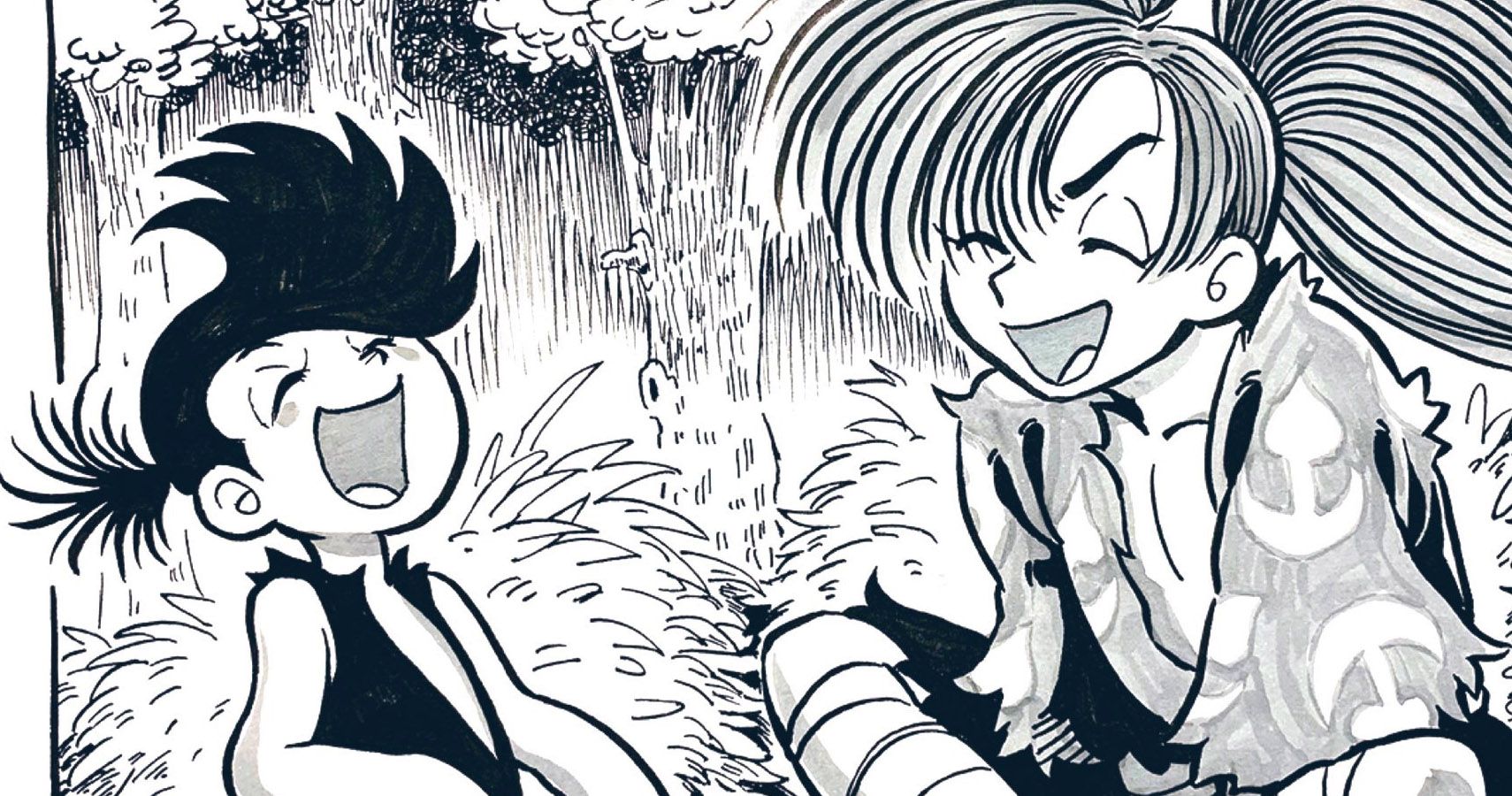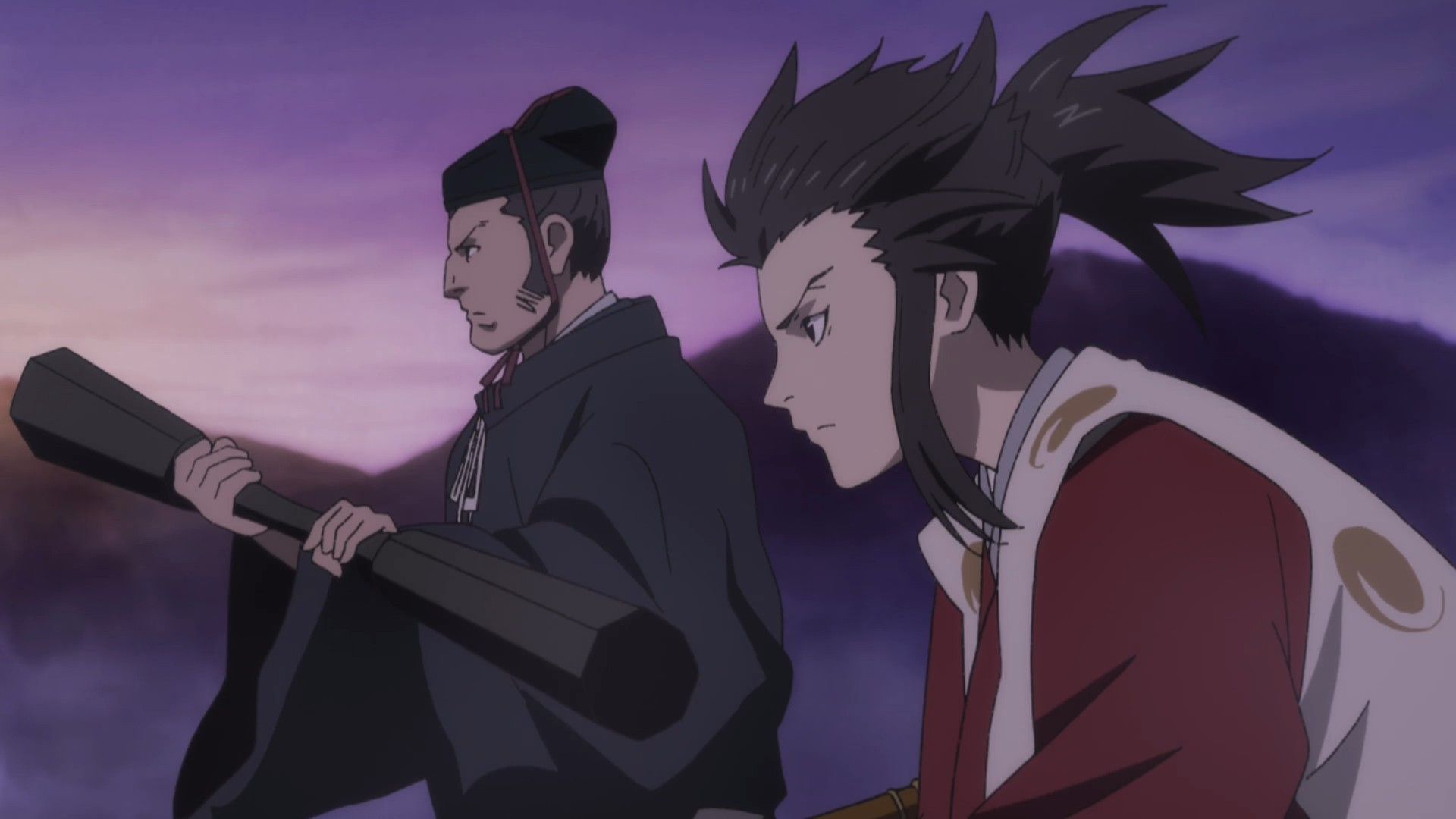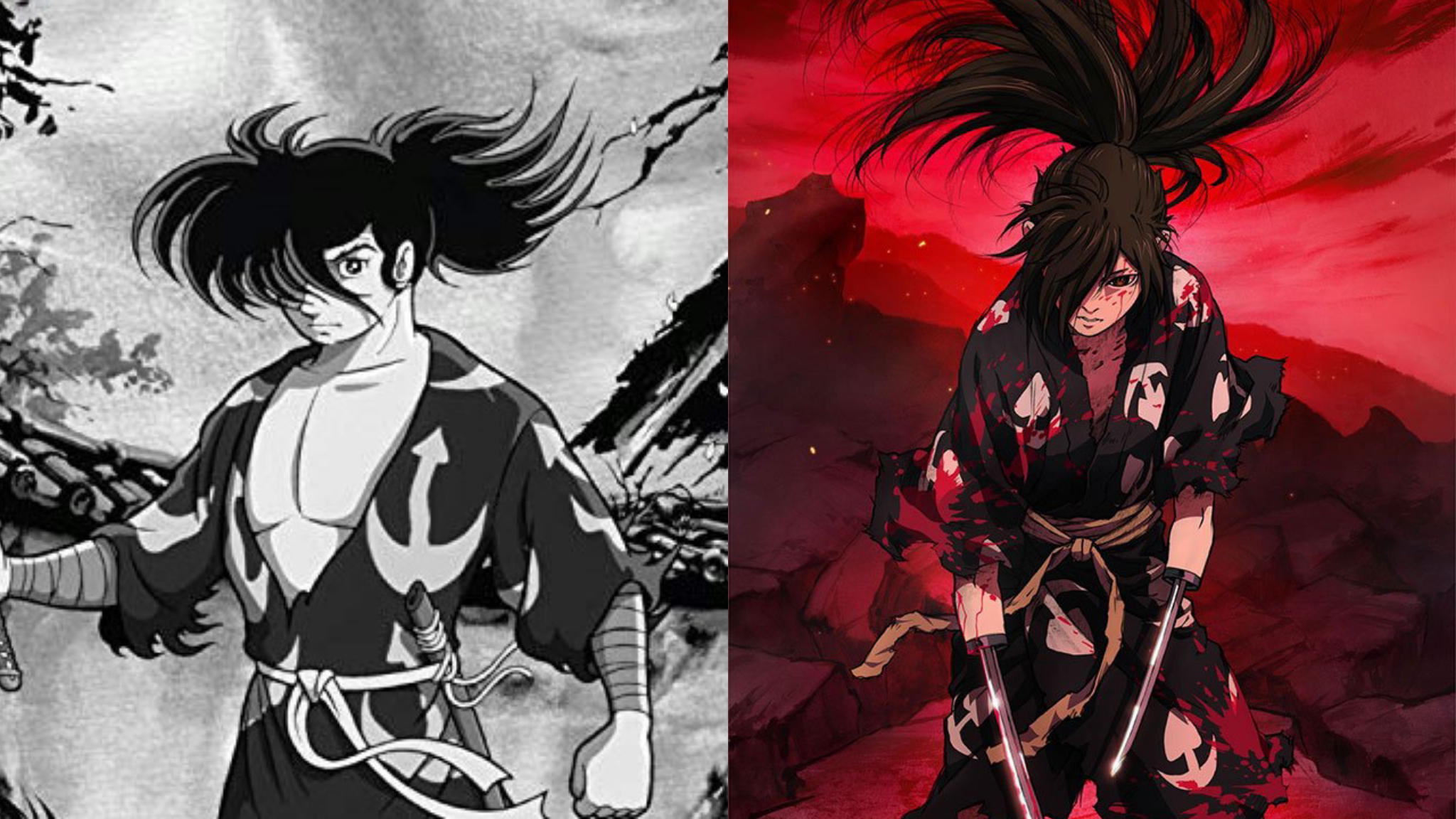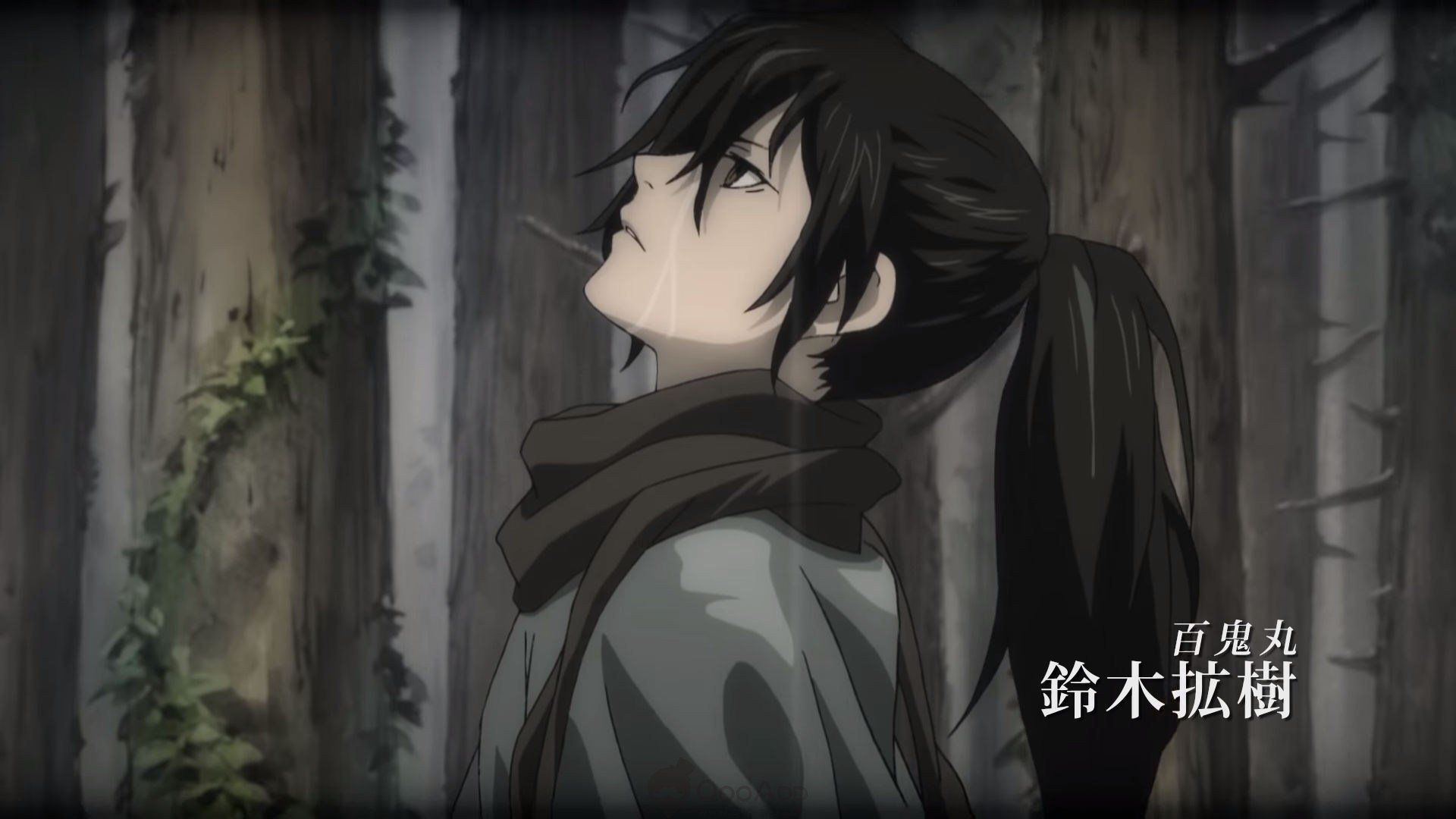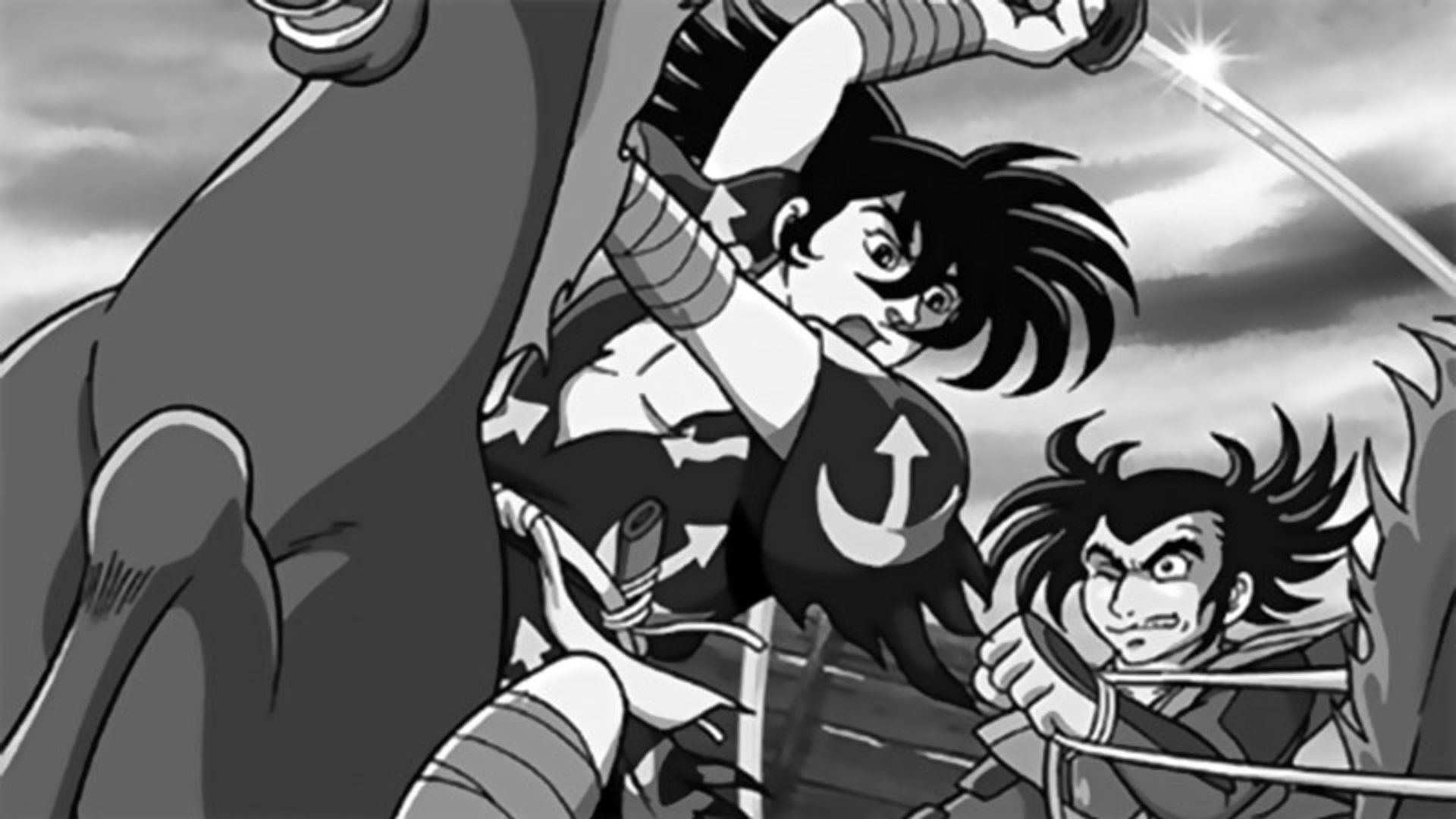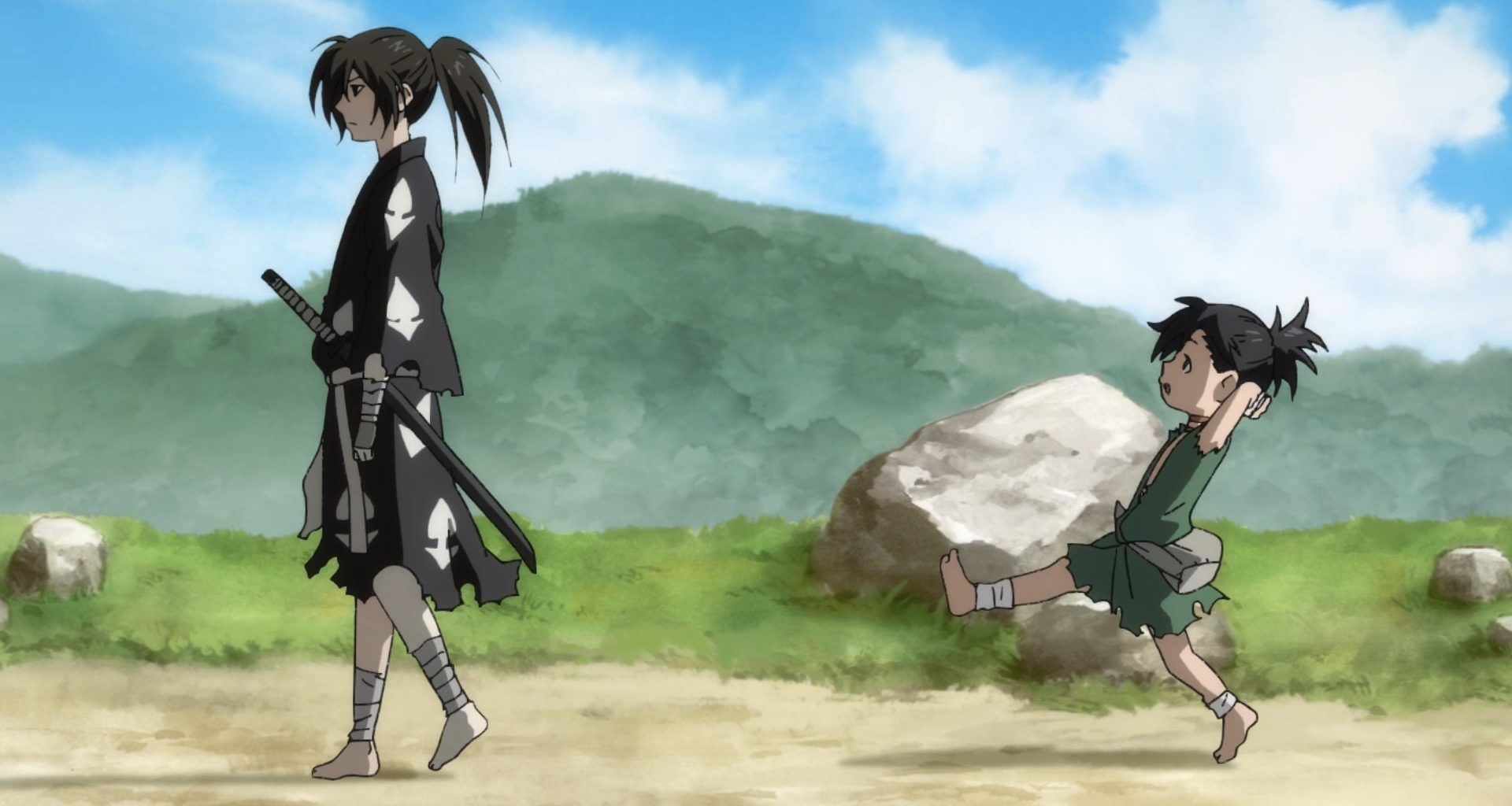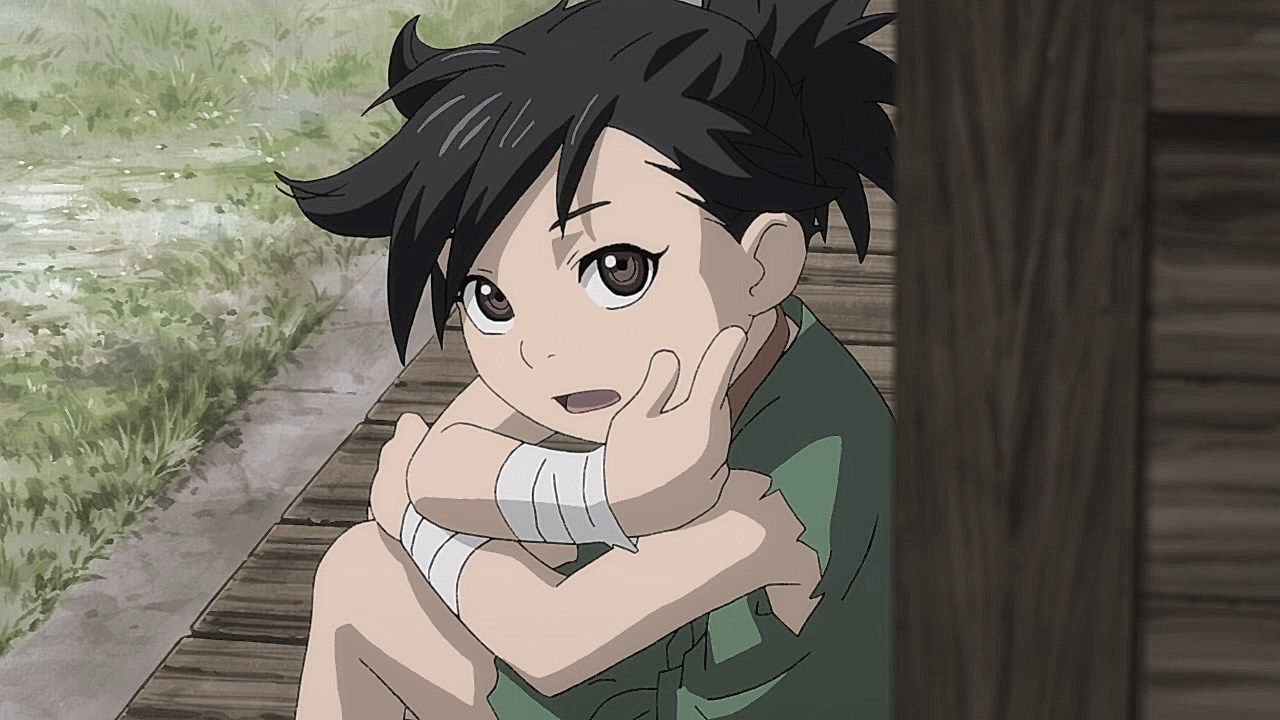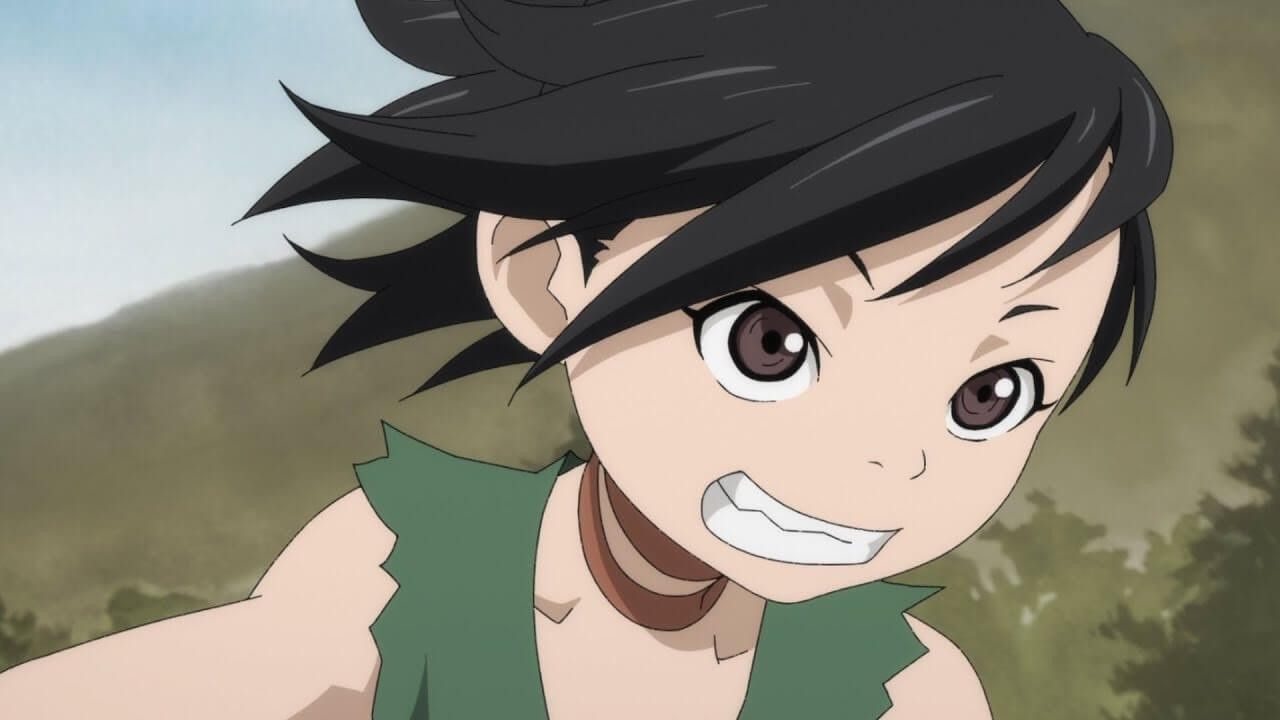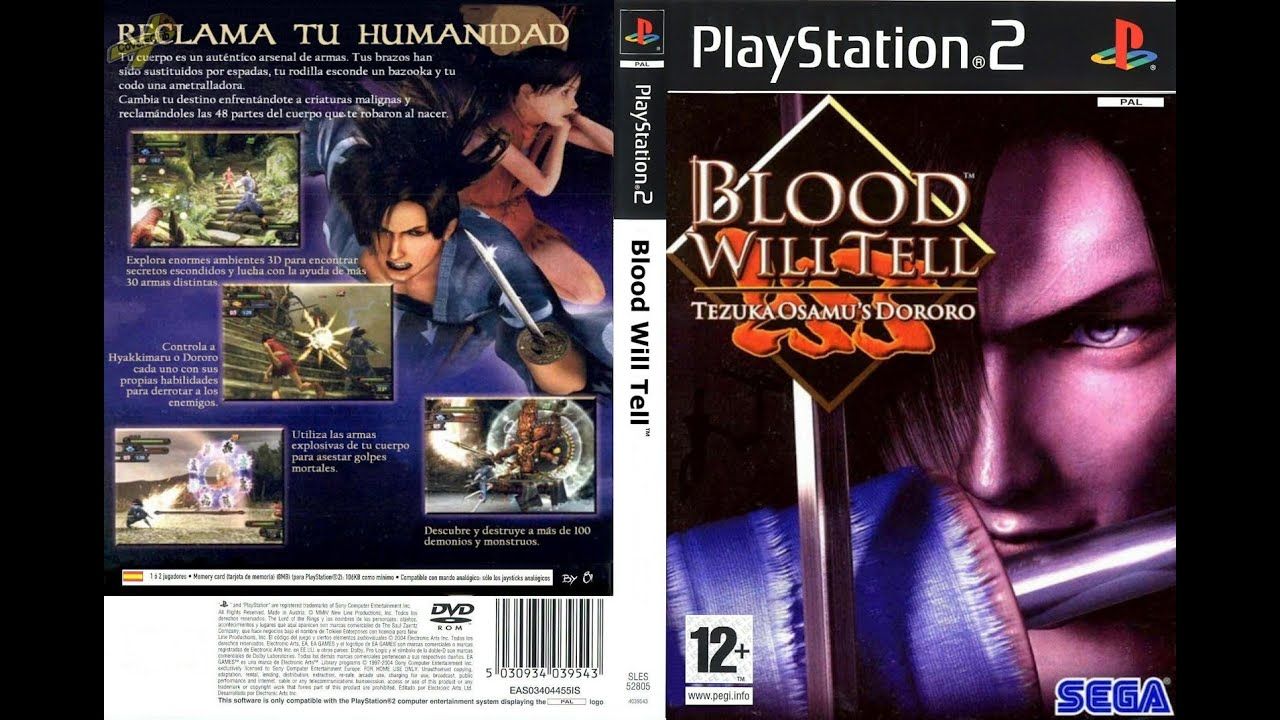A question of humanity versus morality, Dororo touches on what human life means, and if it is worth the cost of someone else’s. Daigo Kagemitsu makes a pact with the 12 demons to help save his land, but in return, his son Hyakkimaru is born with no eyes, nose, ears, skin, and limbs. Hyakkimaru was meant to be disposed of in a river, but was found by a medicine man and given prosthetic limbs, and swords for arms. Hyakkimaru, accompanied by Dororo, searches for the demons that stole his senses in an attempt to regain them. To do this he has to defeat each demon. This list contains 10 things you need to know about Dororo.
10 The Manga is Over 50 Years Old
The manga Dororo was published on August 9, 1967, and continued to July 3 the following year. Dororo ran for 19 chapters and was created by the revered Osamu Tezuka. While the manga contains beautiful images of the dark world, the adaptations of Dororo did not fall short. Characters have minor appearance changes, but the tone of the anime feels the same as the manga. The amount of demons Hyakkimaru fights has also been changed from 48 to 12, giving more emphasis on each one.
9 Dororo is an Osamu Tezuka Work
Osamu Tezuka is a pioneer of the manga industry. Tezuka’s incredible work ethic allowed him to create hundreds of works, such as Kimba the White Lion in 1950, and Astro Boy in 1951. He gained the nickname “The Godfather of Manga” for his hard-edge painting style during the 1950’s.
In Tezuka’s autobiography, The Osamu Tezuka Story: A Life in Manga and Anime, he states that after the war he wanted to use cinematic techniques, rather than being limited to drawings. Tezuka sadly passed away on February 9, 1989.
8 Dororo was Adapted Twice
Dororo aired during the winter 2019 season, instantly captivating fans during its 24-episode run. However, this popular adaptation is actually the second adaptation of Dororo. A prior adaptation, titled Dororo and Hyakkimaru, originally aired in the spring of 1969, running for 26-episodes.
In the 1969 version, Hyakkimaru was born as a head and torso missing 48 body parts. He had to must recover each part from a different demon. Hyakkimaru saves Dororo from conflict, and the two travel together on a quest to recover Hyakkimaru’s body. Both adaptations depict Dororo’s world to have a dark setting, accurate to the manga.
7 Silence Tells the Story
Silence is a theme throughout Dororo. If you have seen the series, then you will know Hyakkimaru isn’t a man of many words. Apart from a few mumbles, Hyakkimaru doesn’t say his first acknowledged words until the eighth episode. This is during the scene when Saru and his adoptive older sister, Oume, give a flower to Hyakkimaru and Dororo. After sniffing the flower, Hyakkimaru turns to Dororo and says her name. The scene is touching, as it shows Hyakkimaru slowly but surely making progress in recovering himself.
6 Silence in the 1969 Adaptation
Originally, Hyakkimaru wasn’t always the strong silent type. In the 1969 adaptation of Dororo, Hyakkimaru speaks as early as the first episode. In multiple scenes, he is seen speaking with Dororo, specifically when she introduces herself as "the greatest thief in the world.”
Hyakkimaru’s speech isn’t the only difference from the 2019 adaptation of Dororo. Being from 1969, the entire anime is in black and white. The black and white of the 1969 adaptation and the cool dark colors of the 2019 is fitting, given the dark feel and themes of the show and helps with the world building.
5 Studio Mappa Worked on Dororo
Tezuka Productions, along with Studio Mappa, worked together to help bring Dororo to screens. Studio Mappa is known for their works on shows such as Zankyou no Terror, Yuri!!! On Ice, and “2018 Anime of the Year” nominee Zombieland Saga.
Studio Mappa was established on June 14, 2011 by Masao Maruyama. Maruyama is a former founder of the studio, Madhouse. The 1969 adaptation of Dororo was produced by Mushi Production. The studio is known for Tomorrow’s Joe and Tezuka’s Astro Boy.
4 A Troubled Time
Dororo takes place during the Sengoku period of Japan. The Sengoku period is known for its large amounts of military conflict, social instability, and political fascination. During this time, the population of Japan was majority male, and woman were married at a young age.
This setting fits well for Dororo because Hyakkimaru’s father, Daigo Kagemitsu, made a deal with the devils in exchange for power to take over the nation. In the time period of the samurai, there were no guns. With Hyakkimaru having swords for arms, he fits right in with the age of swordsman.
3 Dororo’s Non-Conforming Gender
Dororo considers herself the world’s greatest thief, introducing herself to Hyakkimaru as such. She refuses to dress femininely, and refers to herself as a boy, due to being raised as a male. Dororo originally pretended to be a male because it would be easier for her to get by. She wears a green robe that is ripped at the sleeves and tied with rags, and a bag at the waist. It’s not revealed that Dororo is female until episode nine. During a conversation with Hyakkimaru and a nun while Dororo was sleeping, the nun says, “…It must be difficult traveling with such a young girl.”
2 Dororo is Voiced by a Child
In the 1969 adaptation, Dororo is voiced by Nachi Nozawa, known for his role as Cobra in Space Cobra. In the 2019 adaptation, Dororo is voiced by Rio Suzuki, who is just 14 years old. Suzuki voice acts Kanino in Modest Heroes, and has appeared in various TV dramas since.
She also plays Kayo Hinazuki as a child in the 2016 film adaptation of Erased. It is common for young females to voice act young male characters. And with Dororo being female, but identifying as a male, this choice fits well.
1 Video Game Adaptation
In addition to the 1969 and 2019 anime adaptations, Dororo received a video game adaptation. Blood Will Tell: Tezuka Osamu’s Dororo was released on September 9, 2004 in Japan, and September 21, 2004 in North America. The game is platformed on the PlayStation 2 and was developed by Sega. Blood Will Tell follows the same plot as the manga., following Hyakkimaru and Dorodo's adventure as they fight 58 demons. The story is split into eight chapters, and both Hyakkimaru and Dororo are playable. Famitsu, a Japanese video game magazine, rated Blood Will Tell a 30 out of 40 score.

